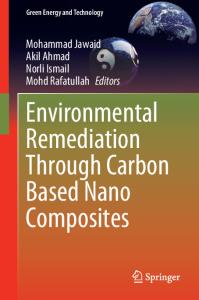The Structures of Copper-Doped Carbon Aerogels Prepared by an Ion Exchange Method
- PDF / 1,939,828 Bytes
- 6 Pages / 612 x 792 pts (letter) Page_size
- 35 Downloads / 296 Views
The Structures of Copper-Doped Carbon Aerogels Prepared by an Ion Exchange Method
Noriko Yoshizawa1, 2, Ruowen Fu1, 3, Mildred S. Dresselhaus1, Gene Dresselhaus1, Joe Satcher4 and Ted Baumann4 1 Massachusetts Institute of Technology, 77 Massachusetts Ave., Cambridge, MA 02139, USA 2 National Institute of Advanced Industrial Science and Technology, 16-1 Onogawa, Tsukuba 305-8569, Japan 3 Materials Science Institute, PCFM Key Laboratory, Zhongshan University, Guangzhou 510275, China 4 Lawrence Livermore National Laboratory, P.O. Box 808, Livermore 94551, USA ABSTRACT Abstract -- The copper-doped carbon aerogels were fabricated by ion exchange method. Their structures were investigated by surface area detection, TEM, SEM and XPS. The experimental results showed that the copper-doped carbon aerogels produced have low mass density, a high density of nano-pores and high surface areas. Many copper nano-particles were produced after carbonization of copper-doped carbon aerogels. Before carbonization, part of the copper atoms were reduced into low valence compounds, such as Cu2O. INTRODUCTION Since the first successful synthesis by R.W. Pekala from Lawrence Livermore National Laboratory of carbon aerogels in 1988[1], many scientists have paid much attention to this novel material. Carbon aerogels are composed of interconnected nano-particles with diameters from 3 to 25 nanometers. They are considered to be a novel mesoporous carbon material with low mass density, high porosity, high surface area, high electrical conductivity etc. [2 ]. They may be promising in applications for electrode materials for supercapacitors and rechargeable batteries, advanced catalyst supports, adsorbents for gas and other pollutants, chromatographic packing, thermal insulator and for other fields [2-6]. Aiming at fundamental research and exploring the possible modifications in their conductivity and catalytic activity, many works have recently focused on the metal doping of carbon aerogels [7-8]. Our original goal with this work was to develop a method for the preparation of metal-loaded carbon aerogels, which involves the copper ion exchange with carboxyl groups in a gel. This method might be a more reliable way to get a uniform dispersion of metal species in the aerogel framework because the ion exchange groups of carboxyl are absolutely uniform in the polymer matrix. EXPERIMENTAL The ion exchange aerogels were prepared by sol-gel polymerization of the K-salt of 2,4-dihydrobenzoic acid and formaldehyde in aqueous solution. Every sample was shaped in a cylinder, 1cm in diameter. The wet gels were soaked in a 0.1M of Cu(NO3)2 aqueous solution for three days, followed by soaking them for 1 day in fresh distilled water to rinse them. Then the P8.28.1
copper-loaded sol-gels were dried supercritically and finally carbonized at 1050 oC in an N2 atmosphere to obtain carbon aerogels. The copper-loaded aerogel and copper-doped carbon aerogel are denoted as TFB33Cu or TFB41Cu and TFB33Cu-C or TFB41Cu-C, respectively. The related K-containing aerogel and
Data Loading...











